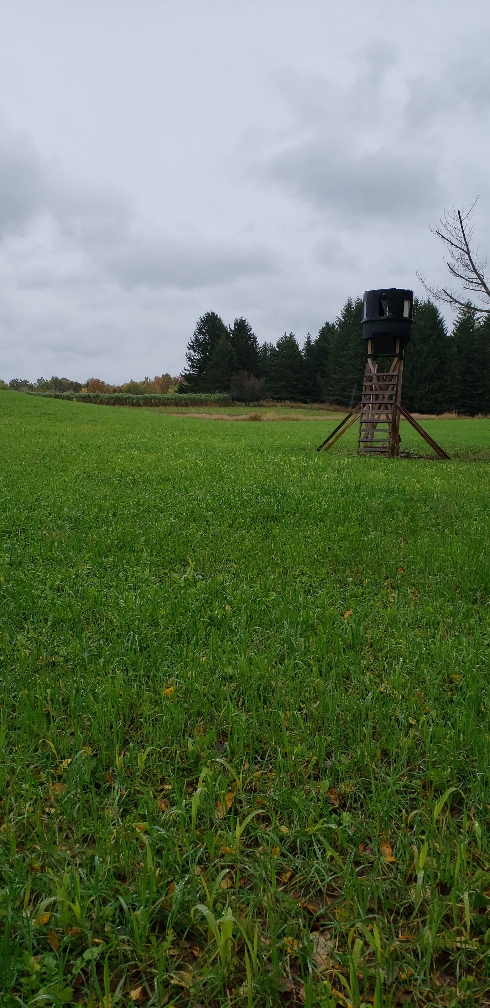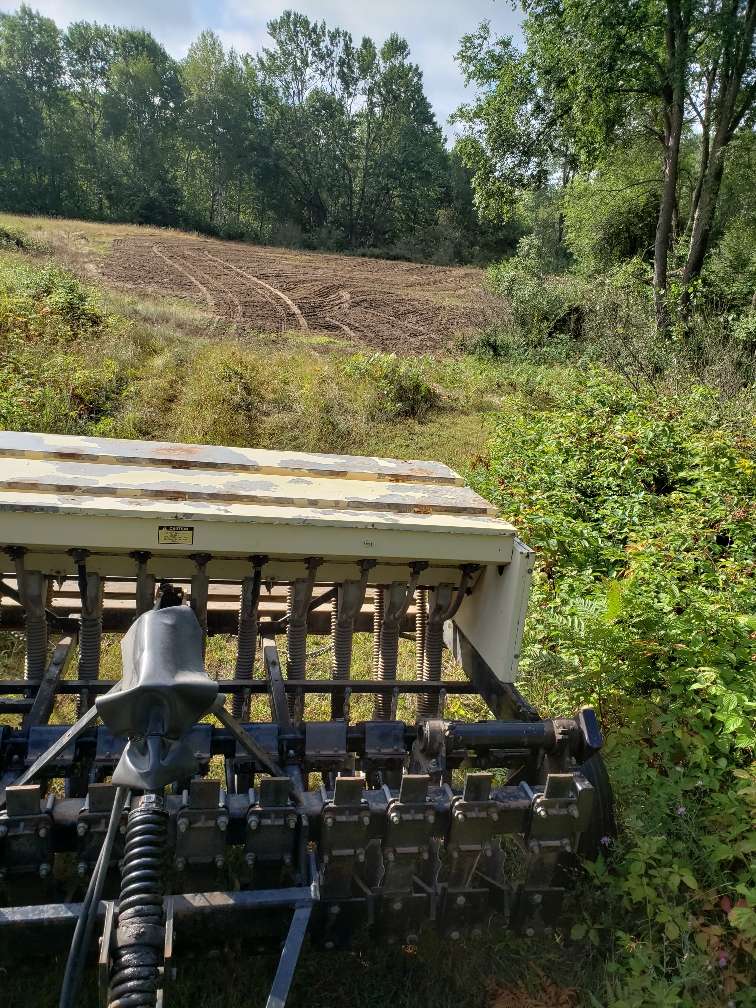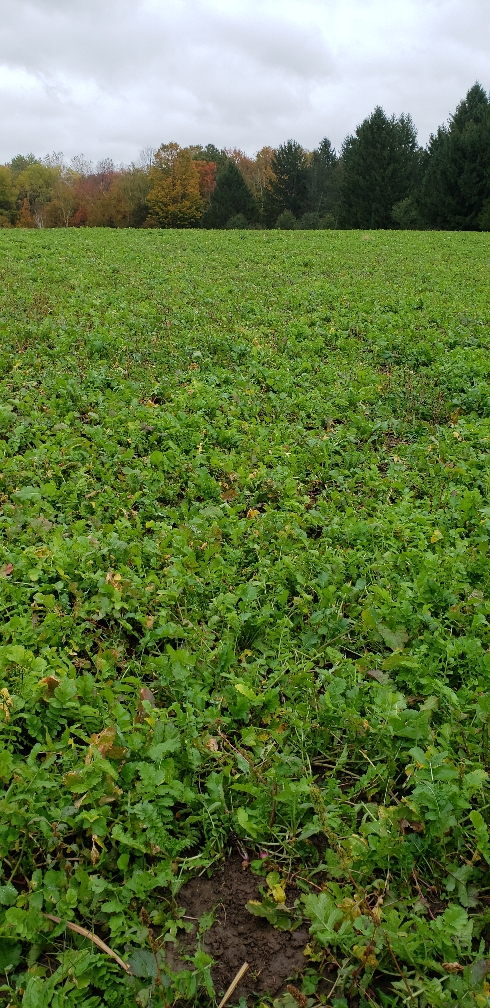You are using an out of date browser. It may not display this or other websites correctly.
You should upgrade or use an alternative browser.
You should upgrade or use an alternative browser.
Truax Flex II input
- Thread starter Iowa_Dave
- Start date
I have the 8 foot pull behind model and love it. 3 seed boxes. Plant everything from clover, brassicas, radishes, turnips in the small seed box and in the large mix rye, oats and radish mix in the large box. I think next I will try some native grasses in the fluffy seed box. I have had some success with soybeans as well.
Brassica radish and turnip plot in one pic. Rye oats and radish pic and one pic of just finished planting an little kill plot



Sent from my SM-G965U using Tapatalk
Brassica radish and turnip plot in one pic. Rye oats and radish pic and one pic of just finished planting an little kill plot



Sent from my SM-G965U using Tapatalk
Iowa_Dave
5 year old buck +
Great input and very timely too. Thank you very much!! I received this info about 10 minutes before I looked at the drill I think I will be buying. What size tractor would you say that you need for one this size? The one that I am looking at is the same size as yours. I found a chart that indicates that 40hp should be sufficient, which is what I have. Would you agree with that based on your experience?
I pull it with a 100 hp john deere 4020 and it doesn't even know it's back there. I have used it one time with my 32 hp Ford 1910 and it pulled it just fine. I have a few hills but not steep. I think 40 hp would be fine. Good luck
Sent from my SM-G965U using Tapatalk
Sent from my SM-G965U using Tapatalk
I bought mine used about 5 years ago have put lots of acres on it. Before that I rented one from our soil conservation district. Shoot me a pm and I'll give you my number if you have any questions. Always happy to talk about deer and food plots
Sent from my SM-G965U using Tapatalk
Sent from my SM-G965U using Tapatalk
Iowa_Dave
5 year old buck +
Will do, thanks again for your very helpful AND timely advice. I feel confident now that this drill will work for my purposes. I will not be going up and down hills to plant, but to get to one field I will need to be able to tow it up and down a fair slope...but I won't be drilling with it as I traverse that area.
I will use to drill about 5-10 acres per year is all, so I think I should be good. Thank you.
I will use to drill about 5-10 acres per year is all, so I think I should be good. Thank you.
We are co owners of a 10' pull-behind Flex II. We normally pull it behind a 90HP MFWD Deere w/ cab, and some others who use it have pulled it with an open station 70 HP Kubota. It's a good, heavy drill and I can definitely recommend it.
I would get the rate reduction kit if you plan to plant native wildflowers and grasses, as we struggle to drop the rates low enough for high quality habitat establishment.
If you plan to use the drill in tilled fields, you'll have to pull the no-till coulters up as we have found they will just dig and dig in loose soil.
I would get the rate reduction kit if you plan to plant native wildflowers and grasses, as we struggle to drop the rates low enough for high quality habitat establishment.
If you plan to use the drill in tilled fields, you'll have to pull the no-till coulters up as we have found they will just dig and dig in loose soil.
Iowa_Dave
5 year old buck +
Well, I just towed it "home" tonight...to my farm that is. At the outside of the wheels, I measure right at 8', the planting apparatus is about 5' wide. I will check into the rate reduction kit, I was unaware of such a thing. I plan on using it for beans, milo/EW/sorghum and brassicas mainly. Do you think I would need that kit for those applications? I intend to use it as a true no-till, but it is possible that I could someday be planting into tilled soil too.
How wet of ground can you get away with planting with it? TIA.
How wet of ground can you get away with planting with it? TIA.
Damp is ok but muddy is not. Keeping the coulters and depth bands turning and working is key and if you have soil/mud collecting on them it can be a pain to plant in. Loose tilled soil is problem but all you have to do is run a cultipacker over it and problem is solved
Sent from my SM-G965U using Tapatalk
Sent from my SM-G965U using Tapatalk
I've never used a rate reduction kit as these are for native grasses. You'll be fine for everything you listed. Soybeans you might want to take one side of the depth bands off to get deeper as soybean like a little more depth.
Sent from my SM-G965U using Tapatalk
Sent from my SM-G965U using Tapatalk
Just saw you'd responded, sorry. I'd agree that if you aren't looking to do native grasses or forbs, you'll be fine without the reduction kits or bigger sprockets. We've had no issues metering out soybeans and wheat somewhat appropriately. I'm not a huge fan of the depth bands vs. traditional closing wheel depth control (less adjustability), but we've gotten decent enough emergence of everything we've planted with just the standard depth bands installed.
In terms of wet soils, we've had to kick the tractors into FWA to get through some muddy spots. The worst part would be the weight of the drill pulling down while losing traction (it's a heavy beast). We've had good emergence of sunflowers, wheat, and native plants planted into wet conditions.
In terms of wet soils, we've had to kick the tractors into FWA to get through some muddy spots. The worst part would be the weight of the drill pulling down while losing traction (it's a heavy beast). We've had good emergence of sunflowers, wheat, and native plants planted into wet conditions.
Iowa_Dave
5 year old buck +
Dragging this thread back up as I will be planting soybeans with it this weekend. I will be no tilling into fields that have rye stubble in them. My question is this...there are 8 planters, each about 6"-8" apart. When planting beans, is it advisable to block off some of the planters? Otherwise, I will end up with very closely spaced rows, no?
I am thinking about covering up every other hole, so I would only be planting 4 rows, not 8. Does this seem like a good approach? TIA.
I am thinking about covering up every other hole, so I would only be planting 4 rows, not 8. Does this seem like a good approach? TIA.
Are you using a pre emergant?Beans will grow to their spacing though so I know we plant on rows around 10 inches ag beans.If you are using a pre emergant you will be ok with a slower canopy where with narrow rows you will canopy faster which reduces your weed growth. I have planted both ways with my Kasco.
Iowa_Dave
5 year old buck +
OK...given that input, I will just let 'er rip and plant them close together. I was a little apprehensive that doing so would put them too close together to grow well, etc. Thank you.Are you using a pre emergant?Beans will grow to their spacing though so I know we plant on rows around 10 inches ag beans.If you are using a pre emergant you will be ok with a slower canopy where with narrow rows you will canopy faster which reduces your weed growth. I have planted both ways with my Kasco.
Don Higgins had an excellent pod cast on explaining how beans will grow to their spacing while most crops such as corn and milo may not head out if planted too thick.In ag there are some guys that plant a staggered method where the rows are real close together then a space every 2 rows.Soil and water will matter more.I am trying the enlist beans from real world this year as I have to be able to spray for pigweed and marestail
Tree Spud
5 year old buck +
Dragging this thread back up as I will be planting soybeans with it this weekend. I will be no tilling into fields that have rye stubble in them. My question is this...there are 8 planters, each about 6"-8" apart. When planting beans, is it advisable to block off some of the planters? Otherwise, I will end up with very closely spaced rows, no?
I am thinking about covering up every other hole, so I would only be planting 4 rows, not 8. Does this seem like a good approach? TIA.
My Van Brunt drill has 9 rows & I cover up 4 of them when planting beans. Works well and allows for driving down the rows & spraying. Also allows for a bit more space when overseeding with WR & red clover in the fall.
Similar threads
- Replies
- 1
- Views
- 422
- Replies
- 196
- Views
- 7K
- Replies
- 4
- Views
- 275